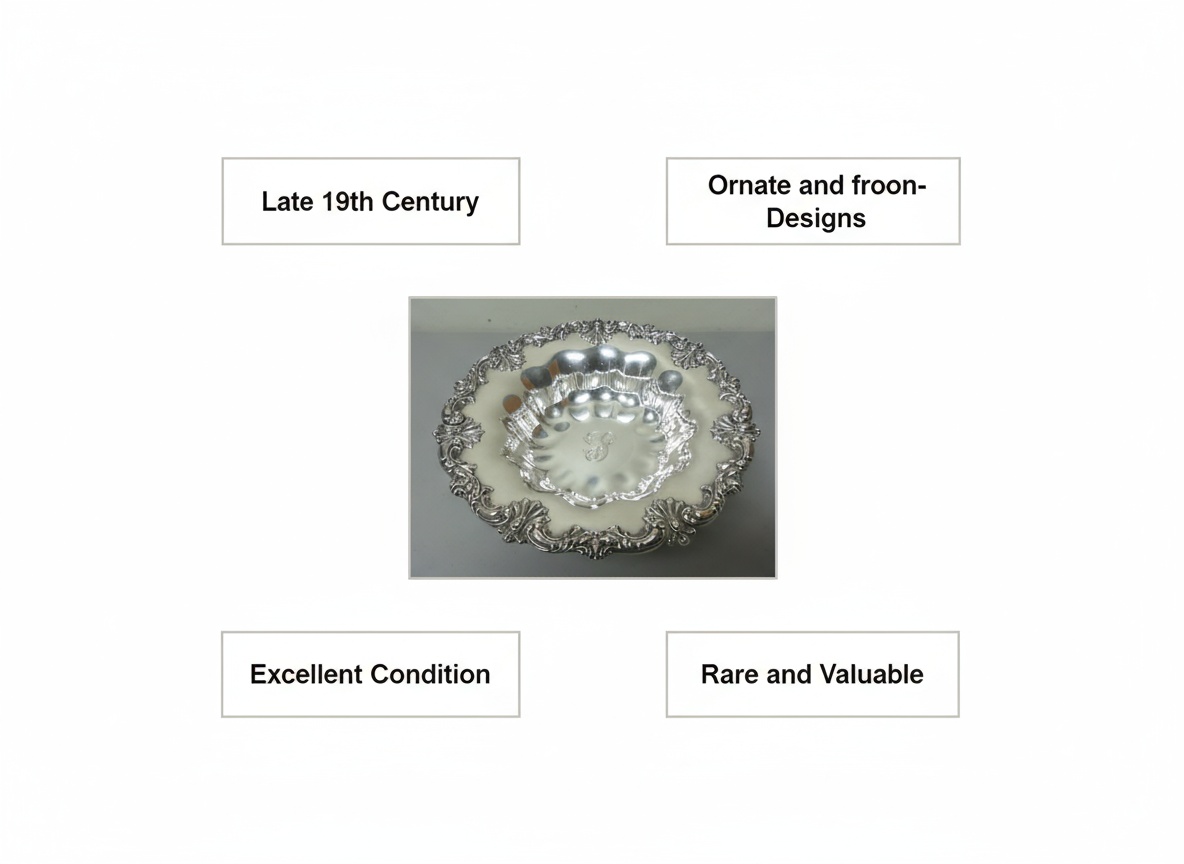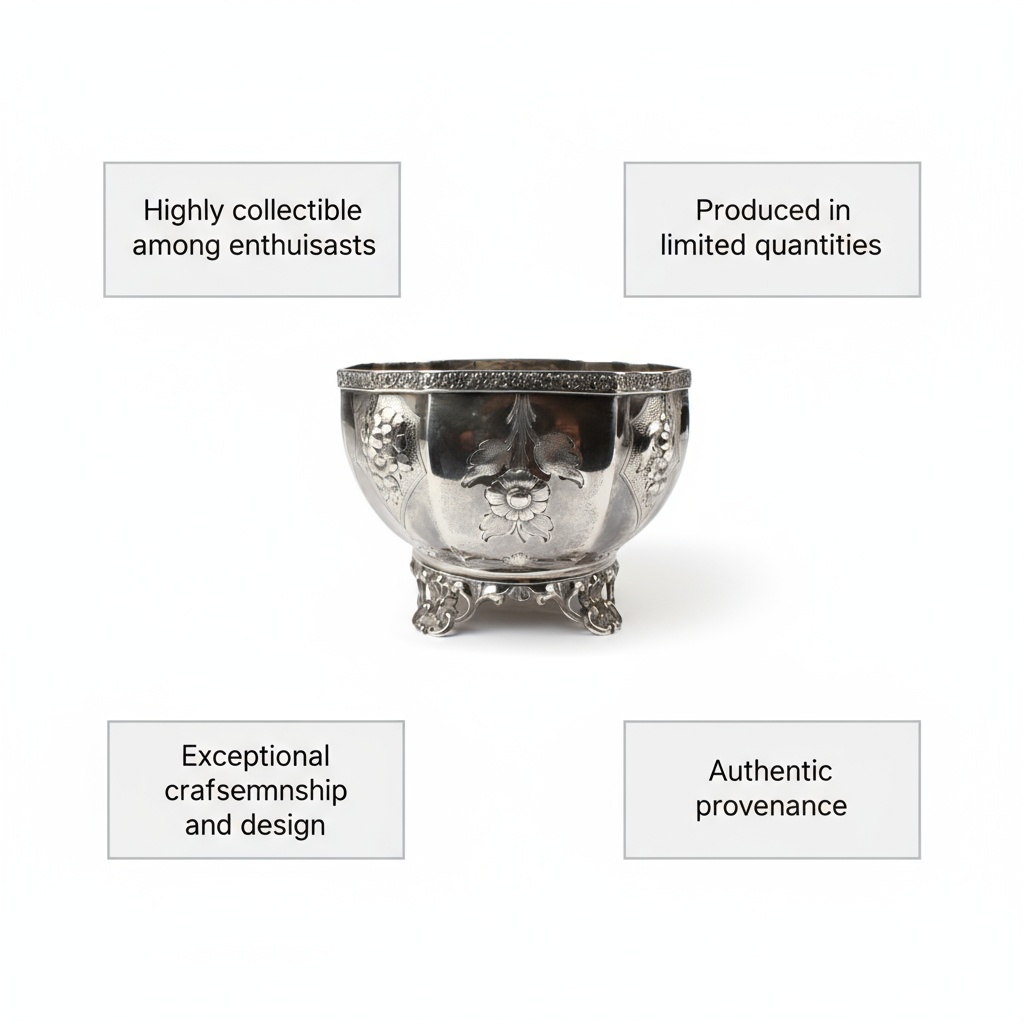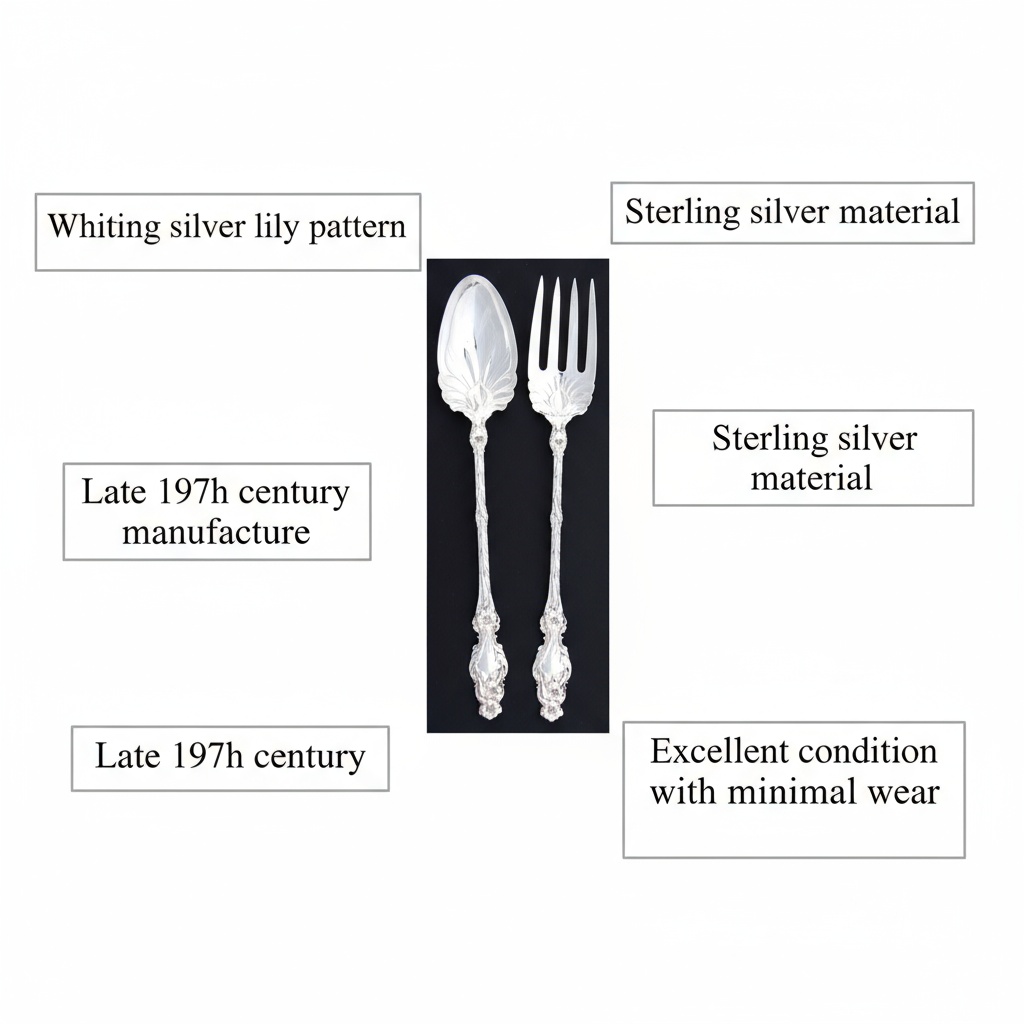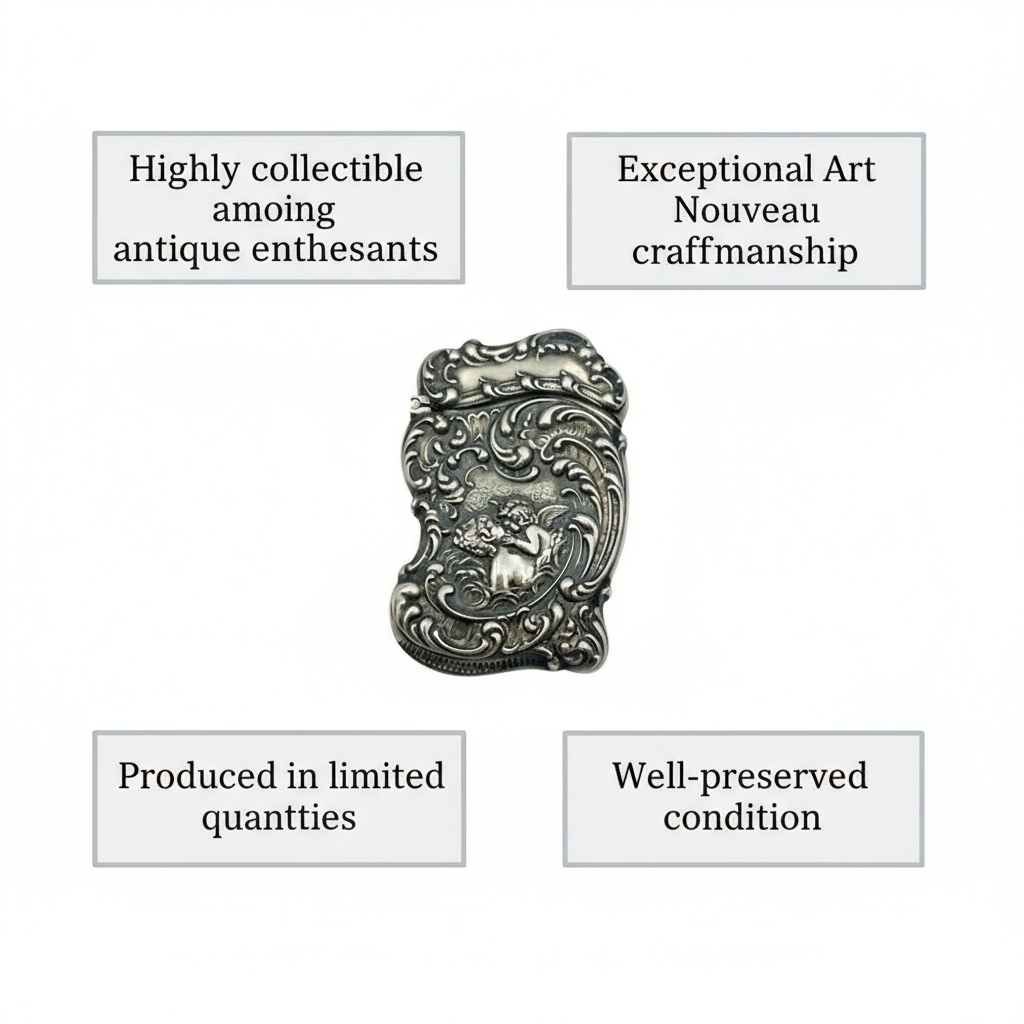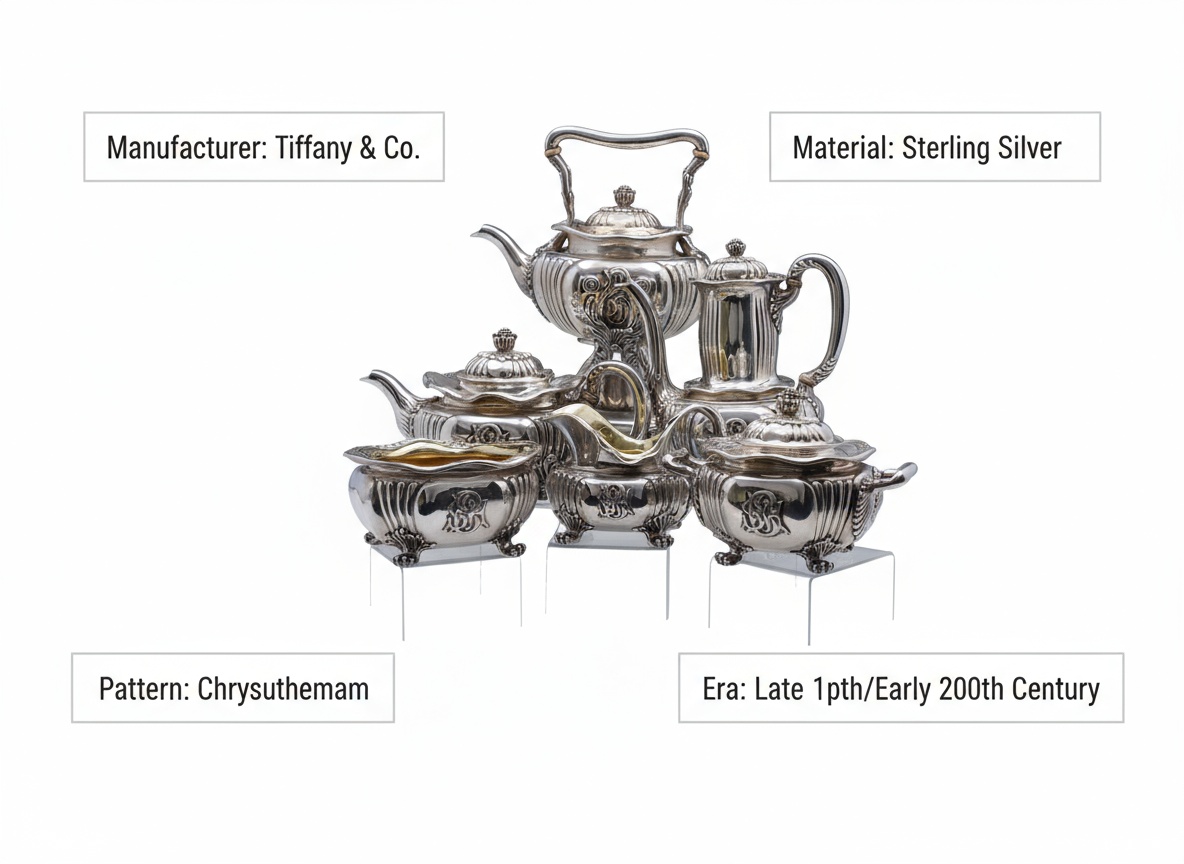<h2>Understanding the Value of Your Redlich Silver Centerpiece</h2>
<p>A Redlich silver centerpiece is more than just a decorative object—it's a piece of history that reflects the craftsmanship and artistry of the late 19th century. Whether you've inherited one from a loved one, discovered it in an antique shop, or are simply curious about what it's worth, understanding its value requires knowledge of several key factors. Let's walk through what makes these pieces valuable and how you can determine whether yours is sterling or silver-plated, what hallmarks to look for, and why a professional appraisal matters.</p>
<h2>What Makes a Redlich Silver Centerpiece Valuable?</h2>
<p>The value of your Redlich silver centerpiece hinges on multiple factors working together. First, you need to understand whether you're dealing with <strong>sterling silver</strong> or <strong>silver-plated</strong> material. This distinction alone can shift your piece's worth from hundreds to thousands of dollars.</p>
<p>For sterling pieces, the weight of the silver establishes a baseline value tied to current spot prices. However, maker's marks, design rarity, condition, and provenance create collector premiums that often far exceed the melt value. A rare Redlich centerpiece in excellent condition with intricate floral and scroll designs can easily command between $3,000 and $4,000 or more, depending on its specifics.</p>
<p>Silver-plated centrepieces have much less intrinsic metal value but can still be worth collecting if the maker is respected and the design is distinctive. The value here depends almost entirely on age, maker reputation, and desirability among collectors.</p>
<div class="callout tip"><p><strong>Pro Tip</strong></p>
<p>Don't assume a piece is worthless just because it's silver-plated. Redlich pieces, even when plated, can have collector value if they're well-made and historically interesting.</p></div>
<h2>How to Tell If Your Redlich Centerpiece Is Sterling or Silver-Plated</h2>
<p>This is often the first question people ask, and it's crucial for determining value. Here's what you should look for:</p>
<p><strong>Check for hallmarks and maker marks.</strong> Look on the underside, rim, or base of your centerpiece for stamped marks. You're looking for:</p>
<ol>
<li>The name "Redlich" or a maker's symbol</li>
<li>The word "Sterling" or the number "925" (indicating sterling silver)</li>
<li>Country or assay office marks</li>
<li>Regional hallmark symbols</li>
</ol>
<p>Take clear, close-up photographs of every mark you find. These images are invaluable for identification and will be essential if you decide to get a professional appraisal.</p>
<p><strong>Perform a magnet test.</strong> Silver is not magnetic, so if a strong magnet sticks to your piece, it's either not silver or it's plated over a magnetic base metal. However, this test alone won't tell you if something is sterling or plated—it just rules out certain base metals. For a definitive answer, you'll need an acid test, X-ray fluorescence (XRF) analysis, or a specialist appraisal.</p>
<p>Learn more about <a href="/blog/what-to-look-for-when-appraising-antique-silver">identifying antique silver</a> by exploring what certified appraisers examine during the evaluation process.</p>
<h2>Identifying Redlich Hallmarks and Maker's Marks</h2>
<p>Understanding maker marks is key to confirming authenticity and dating your piece. Redlich marks typically appear on the underside or base of the centerpiece and may include:</p>
<ul>
<li>The stamped name "Redlich"</li>
<li>Numeric hallmarks like "925" for sterling silver</li>
<li>Assay office symbols or regional hallmark systems</li>
<li>Patent marks or date codes in some cases</li>
</ul>
<p>Any engraving, monograms, or additional inscriptions can also help appraisers determine the piece's age and origin. Document every visible mark with clear photographs—top, bottom, and close-ups from multiple angles.</p>
<p>If you're unsure what the marks mean, don't worry. Professional appraisers are trained to decode hallmarks and connect them to specific makers, production periods, and regional standards. This expertise is one of the key reasons to seek a <a href="/blog/how-to-find-a-reliable-antique-silver-appraiser">reliable antique silver appraiser</a>.</p>
<h2>Evaluating Condition and Its Impact on Value</h2>
<p>The condition of your Redlich silver centerpiece significantly affects its appraised value. A piece in excellent condition—with minimal tarnish, wear, or damage—commands a premium compared to one that's been heavily used or poorly maintained.</p>
<p><strong>What collectors and appraisers look for:</strong></p>
<ul>
<li>Surface finish and patina (which can actually add authenticity and age value)</li>
<li>Signs of repair, dents, or deep scratches</li>
<li>Structural integrity of any joints, feet, or ornamental elements</li>
<li>Completeness (are any parts missing or replaced?)</li>
<li>Originality of all components</li>
</ul>
<p>Here's important advice: <strong>don't polish or aggressively clean your centerpiece before getting it appraised.</strong> Patina can help appraisers date the piece and verify authenticity. Overzealous cleaning can actually diminish value and remove evidence of age.</p>
<div class="callout info"><p><strong>Did You Know?</strong></p>
<p>A slight patina on antique silver can signal authenticity. Collectors often prefer gently aged pieces to ones that have been stripped bare or heavily buffed.</p></div>
<p>For guidance on preparing your piece, explore <a href="/blog/how-to-prepare-for-an-antique-silver-appraisal">how to prepare for an antique silver appraisal</a> to learn best practices before submitting your item for expert evaluation.</p>
<h2>Getting an Accurate Appraisal for Your Redlich Centerpiece</h2>
<p>Whether you're looking to insure, sell, or simply know what your piece is worth, a professional appraisal is the gold standard for accuracy. Here's how to prepare and what to expect:</p>
<p><strong>Gather documentation:</strong></p>
<ol>
<li>Clear photographs from multiple angles (top, bottom, sides, details of marks)</li>
<li>Measurements (height, width, depth)</li>
<li>Weight (if you have access to a scale)</li>
<li>Any provenance or purchase history</li>
<li>Family stories or documentation about the piece's origin</li>
</ol>
<p><strong>Choose a qualified appraiser.</strong> Look for professionals who:</p>
<ul>
<li>Follow <strong>USPAP</strong> (Uniform Standards of Professional Appraisal Practice) standards</li>
<li>Hold certifications from respected organizations like the <strong>American Society of Appraisers (ASA)</strong>, <strong>Appraisers Association of America (AAA)</strong>, or <strong>International Society of Appraisers (ISA)</strong></li>
<li>Specialize in antique silver or decorative arts</li>
<li>Provide written appraisal reports suitable for insurance or legal purposes</li>
</ul>
<p>AppraiseItNow connects you with a national network of credentialed specialists. You can submit your photos and documentation securely online, with no office visit required, and receive professional valuations that meet the highest standards.</p>
<p>For more details on what to expect, read about <a href="/blog/the-basics-for-beginners-understanding-antique-silver-appraisals">the basics for beginners understanding antique silver appraisals</a>.</p>
<h2>Selling Your Redlich Silver Centerpiece: Where to Go</h2>
<p>If you've decided to sell, your options depend on your piece's value and condition. Let's talk about what doesn't work and what does.</p>
<p><strong>Pawn shops typically offer below market value</strong> because they resell for profit and may not recognize maker premiums or understand the collector market. If your Redlich centerpiece is sterling and in good condition, you'll likely receive more money by using a specialist dealer, auction house, or a professional appraisal before selling.</p>
<p><strong>Better options include:</strong></p>
<ul>
<li><strong>Specialist silver dealers</strong> who understand maker reputation and market demand</li>
<li><strong>Auction houses</strong> that handle decorative arts and antiques (especially if your piece is rare or valuable)</li>
<li><strong>Online marketplaces</strong> for antiques, where collectors actively search for specific makers</li>
<li><strong>Estate sale companies</strong> if you're liquidating an entire collection</li>
</ul>
<p>Before approaching any buyer, get your appraisal in hand. A certified valuation strengthens your negotiating position and ensures you're not leaving money on the table.</p>
<p>Learn more about <a href="/blog/maximizing-your-return-the-benefits-of-antique-silver-appraisals">maximizing your return through antique silver appraisals</a>.</p>
<h2>Understanding Silver Value: Weight, Spot Price, and Collectibility</h2>
<p>Many people wonder: <strong>is the value of a Redlich centerpiece based on silver weight or rarity?</strong> The honest answer is both, but in different ways depending on the material.</p>
<p><strong>For sterling silver pieces:</strong></p>
<p>The weight of silver establishes a baseline value. If you know your centerpiece weighs, say, 50 troy ounces, and sterling silver is currently trading at $25 per troy ounce, that's $1,250 in melt value. However, the actual appraised value is almost always significantly higher because:</p>
<ul>
<li>The maker's reputation adds a premium</li>
<li>Rarity and design desirability matter to collectors</li>
<li>Historical significance increases value</li>
<li>Condition and completeness affect price</li>
<li>The cost of craftsmanship is built in</li>
</ul>
<p><strong>For silver-plated pieces:</strong></p>
<p>There's minimal intrinsic metal value. The price is driven almost entirely by collectibility—maker reputation, age, design, condition, and how much other collectors are willing to pay.</p>
<div class="callout note"><p><strong>Key Insight</strong></p>
<p>Silver weight provides a floor for sterling pieces, but the craftsmanship, rarity, and maker prestige create the ceiling. Redlich pieces often sell well above melt value because of their quality and desirability.</p></div>
<p>For detailed information on how market trends affect your piece's value, explore <a href="/blog/the-impact-of-market-trends-on-personal-property-appraisals-a-comprehensive-analysis-3">the impact of market trends on personal property appraisals</a>.</p>
<h2>What to Do With Inherited Silver: A Family Heirloom Guide</h2>
<p>If your Redlich centerpiece came to you from Grandma's estate or a family collection, you're facing a common question: what should you do with it? Whether to keep, insure, sell, or consign depends on its value and your circumstances.</p>
<p><strong>Here's a practical path forward:</strong></p>
<ol>
<li><strong>Don't alter it.</strong> As mentioned, patina and original condition matter. Skip aggressive cleaning.</li>
<li><strong>Document the history.</strong> Gather any family stories, old photos, or purchase receipts.</li>
<li><strong>Get it appraised.</strong> This tells you exactly what you have and what it's worth.</li>
<li><strong>Decide based on value and emotional attachment.</strong> If it's valuable and you don't use it, selling might make sense. If it's an important family piece and you adore it, keep it and ensure it's properly insured.</li>
<li><strong>Consider display and care.</strong> If you're keeping it, learn proper storage and handling to maintain condition.</li>
</ol>
<p>Your appraisal report becomes a valuable document for insurance claims, estate settlement, or supporting a sale. Professional appraisers provide written documentation that holds up to legal and financial scrutiny.</p>
<h2>Answering Common Questions About Silver Appraisals</h2>
<p><strong>How much will a pawn shop give you for sterling silver?</strong></p>
<p>Pawn shops offer fast transactions but typically price below market value. They may calculate based on scrap silver weight if they don't recognize maker marks or collector demand. For a Redlich centerpiece with collectible value, you'll almost always receive more through a specialist channel backed by a professional appraisal.</p>
<p><strong>What are the most valuable marks on silver?</strong></p>
<p>Marks indicating sterling silver (like "925" or "Sterling"), reputable maker names, and country of origin all add value. Hallmarks from respected assay offices also signal quality. These marks help appraisers verify authenticity and connect your piece to historical records and pricing benchmarks.</p>
<p><strong>Does anyone buy silver trays?</strong></p>
<p>Yes, absolutely. Silver serving pieces, trays, centerpieces, and decorative objects have active collector markets—especially pieces by known makers like Redlich. The key is marketing to the right audience, and that's where specialists and auction houses excel.</p>
<p><strong>What is the current selling price for sterling silver?</strong></p>
<p>Spot prices fluctuate daily based on commodity markets. However, a Redlich centerpiece doesn't sell at spot price—it sells at a premium based on maker, rarity, condition, and collectibility. Your appraisal captures today's market price, accounting for both silver content and collector demand.</p>
<p>For additional guidance on appraising and valuing silver items, explore related appraisal categories like <a href="/types/antique-silver">antique silver</a> and <a href="/types/jewelry">jewelry appraisals</a>.</p>
<h2>Why Professional Appraisal Matters for Your Peace of Mind</h2>
<p>Getting a professional appraisal for your Redlich silver centerpiece is an investment that pays dividends in multiple ways. Here's why it matters:</p>
<ul>
<li><strong>Insurance protection:</strong> You know exactly what to insure and for how much</li>
<li><strong>Informed selling decisions:</strong> You understand fair market value and avoid being undercut</li>
<li><strong>Legal documentation:</strong> Written appraisals hold up in estate settlements, divorces, or disputes</li>
<li><strong>Peace of mind:</strong> You have expert confirmation of authenticity, condition, and value</li>
<li><strong>Family communication:</strong> Clear documentation prevents disagreements among heirs</li>
</ul>
<p>A certified appraiser doesn't just assign a number—they provide a detailed report explaining their methodology, comparables they reviewed, and the reasoning behind the valuation. This transparency is valuable whether you're insuring, selling, or simply understanding what you own.</p>
<p>Explore <a href="/blog/the-benefits-of-professional-antique-silver-appraisal">the benefits of professional antique silver appraisal</a> to understand how expert evaluation protects your interests.</p>
<div class="callout note"><p><strong>Key Takeaway</strong></p>
<p>A professional appraisal of your Redlich silver centerpiece provides clarity, confidence, and documentation for any decision you make—whether insuring, selling, or passing it to the next generation.</p></div>
<h2>Taking the Next Step</h2>
<p>Your Redlich silver centerpiece deserves proper evaluation by someone who understands antique silver, maker reputation, and current market conditions. Whether you're curious about value, preparing to sell, or ensuring your heirloom is properly protected, AppraiseItNow makes it simple.</p>
<p>Submit clear photographs, your piece's measurements, and any documentation through our secure platform. Our network of credentialed specialists will review your submission and provide a thorough, USPAP-compliant appraisal report. No office visit required—though in-person evaluation is also available if your piece is particularly valuable or complex.</p>
<p>Ready to understand what your Redlich centerpiece is truly worth? Let's help you make the right decision with expert guidance every step of the way.</p>

